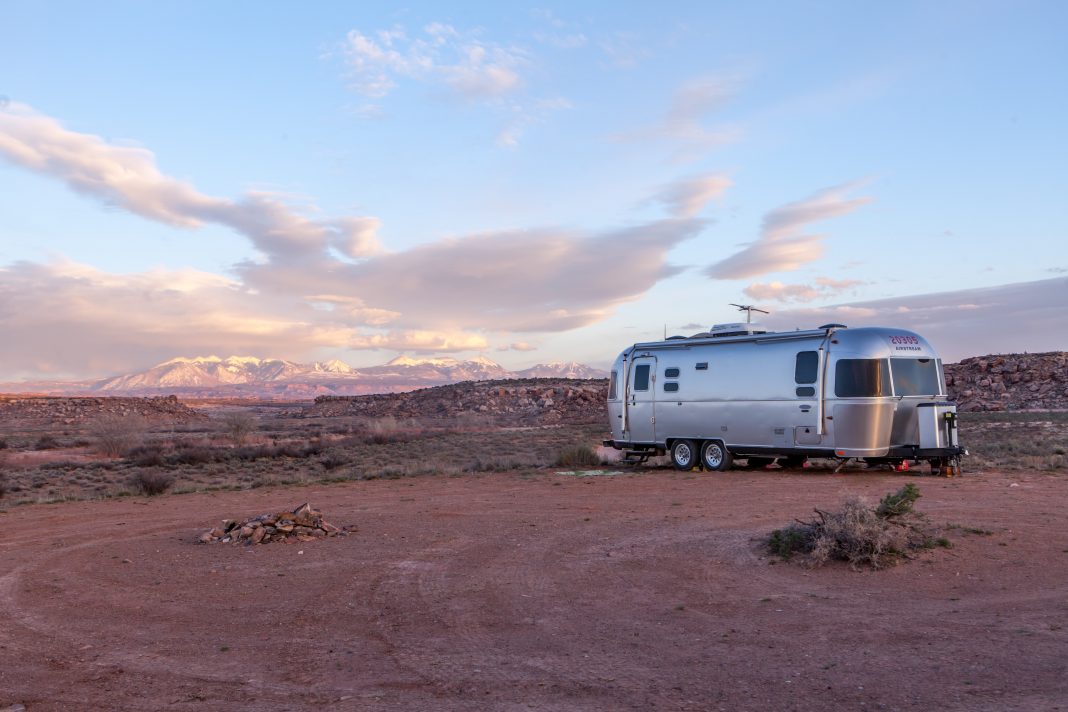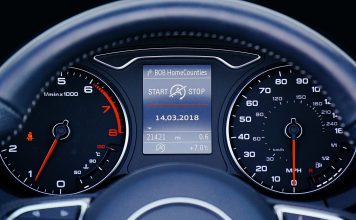 |
|
| Issue #108 • November/December, 2007 |
Many of us like to go camping, but as we age it’s much easier if we have a bathroom, kitchen, refrigerator, microwave oven, television, DVD player, and electric lights! Of course the obvious solution is to buy a 40-foot RV, but this may not fit into your budget, or your yard. You may also like to camp in remote areas not suitable for a large truck and trailer, or in areas lacking utility hookups. Perhaps you really like to sleep in a tent when camping, but would still appreciate having some modern conveniences nearby.
Since the largest spaces in any expensive RV are the sleeping and dining areas, if you are comfortable sleeping in a tent and eating on a picnic table, an RV could be much smaller if it did not include these spaces. Another problem with trying to utilize an RV in areas without the utility hookups of an RV park is the need to operate a generator to power everything.
Solar power trailer uses
Looking at this from a totally different perspective, maybe you would really appreciate having a simple emergency backup source of electrical power for your home or small business without going the generator route, or want to provide electrical power for local public events in areas not served by power lines. Finally, how about being able to have a full-size solar power system that you can tow to disaster areas when needed to power emergency communication equipment or power tools?
What if you could have your own trailer that can do all of the above, at a fraction of the cost and size of an RV, that you can build yourself?
Solar-powered tent
This adventure started for me when I was asked by a friend if I could provide temporary electrical power for a non-profit public event planned for a rural mountain top. They wanted to preserve the quiet wilderness surroundings for over 1,000 attendees without operating a noisy generator, yet they needed electrical power for the circus-size tent’s stage lighting and sound system for the various bands and presenters.
|
Having been in the solar business for many years, my first response was solar power. Since I already had most of the required components, it would be easy to toss everything in the back of my pickup truck and wire everything together when I got there. This temporary approach would be fairly easy, and since this was a non-profit group I did not want to spend money for a one-time, unpaid event. After additional thought I realized I already owned a small enclosed trailer, and this might be perfect to install the solar equipment and avoid the last minute panic of trying to wire everything together in the field while everyone was waiting.
I rarely used this trailer, and as long as I didn’t take up all the interior space with solar equipment, I would still be able to haul furniture or appliances from time-to-time, which was why I purchased this trailer in the first place.
|
To make this trailer even more perfect for remote power or camping applications, it already had a working bathroom! See BHM issue #79 to learn how I installed a waterless composting toilet and a utility sink which do not require any electricity, pumps, or holding tanks to operate.
What had been a temporary portable-power project now took on totally different possibilities. All I needed to add was a microwave oven and a refrigerator and I would have all the conveniences of a full-size RV, as long as I slept in a tent.
I had originally planned to remove the solar power system from the trailer once the public event was over, but before I got around to it we had a major storm and the resulting power outage shut down all our office equipment. I own a portable generator, but then realized this trailer was parked right outside the office. So in the time it takes to unroll a large extension cord, we had everything up and running without having to look for fuel and go through the hassle of getting it started. At this point I realized this solar power trailer had far more uses than I originally considered, and this made it really worth keeping around.
My wife also likes the advantage of having a spare refrigerator nearby when we need to handle the temporary overflow of refrigerated foods you typically encounter when hosting large family events or weekend guests. Since this refrigerator is also powered by the solar system and is always on, there is no more worry concerning food spoilage during extended power outages.
Trailer conversion
Before going into a detailed description on how to select and wire the solar power components, you need to decide what type of trailer will work best if you want to build your own portable solar-power system. Enclosed utility trailers are sold almost anywhere you look along major highways, and they are available in many different shapes and sizes. I paid $3,000 for my 6′ x 12′ model, but it was more expensive since I wanted the extra headroom option which adds six inches to the interior height. I am sure you can find a used model for much less, but I recommend that you do not go smaller than the 6′ x 12′ size I used.
|
Although eight deep-cycle batteries and a refrigerator are very heavy, I was careful to balance these loads on each side of the axle, and stayed within the trailer’s load-limit rating. I now wish I had purchased the heavier-capacity dual-axle model, but again, go with what you can find at a good price. The 12-foot length really worked out well with this large solar array, and I strongly recommend that you look for a model with the optional 6-foot interior height unless you enjoy working bent over for hours. My trailer ended up with a bathroom, full-size refrigerator, and kitchen counter, but if you do not need these added interior features you can get by with a smaller model.
These trailers are available with many different combinations and types of exterior doors, but I really like the dual side-hinged rear doors, which are much easier to open and swing out of the way than a fold-down ramp door. Most models also include a smaller side-door toward the front, and this became the bathroom door when I boxed-in a small interior room in the corner. You definitely want a model with one or more roof vents, as these trailers can really get hot sitting in the sun.
A large solar array that can be folded down for travel must also be able to withstand over 60 mile-per-hour winds and lots of vibration during transport. I wanted a mounting system that was very sturdy, yet would allow future removal without damage to the trailer if I ever decided to sell it, so it took some effort to find a suitable mounting arrangement.
All utility trailers have very thin aluminum exterior walls, but most have fairly strong metal ribs spaced every 12 to 16 inches along both interior sides and under the roof. I was really fortunate that my trailer came completely lined with ½ inch plywood on the interior side-walls, and this feature allowed mounting the solar hardware almost anywhere I wanted. The location of the ribs is easy to find, as there will be visible rows of self-tapping screws on the outside that were used to attach the aluminum siding.
Regardless of how you decide to make your solar array, you will need to attach the supports at these rib locations, and use aluminum angles for spanners when a support cannot be located directly over these ribs. I attached all solar hardware to the trailer using the same type of self-tapping screws that drill directly into the metal ribs behind the exterior aluminum sheet metal.
Solar array mounting
I used larger 165-watt solar modules which are 32 inch wide by 62 inch long and weigh 34 pounds to reduce the total number required. However, solar modules are made in almost any shape and size, which will allow building your folding array with a dimension to best match the trailer size you are using. Since a large solar array could reach the ground when you try to fold it down, you will need to raise the hinge point above the roof line as shown so the folded-down array will clear the fenders.
|
The photos show this trailer with four solar modules which provide a total of 660 watts of power. However, I actually have an extension bracket for each half of the array which allows attaching two more modules and provides a total of 990 watts of solar power. These had to be made removable since they would make the array too long to fold down. I normally don’t attach these extra modules when the trailer is not being used, as the four base modules easily keep the refrigerator operating and the batteries fully charged.
I used 6061-T6 heat-treated 2″ x 2″ x 1/4″ aluminum angle which is as stiff and strong as steel. This structural-grade aluminum is much better for this type of application than the general-purpose aluminum you see in most building supply outlets. Make sure your solar array supports will not bend or fail when speeding down a rough road or your solar array may decide to follow Dorothy to Kansas.
All of the 5/16-inch and 3/8-inch bolts and washers used to assemble my folding array were stainless steel, and all of the nuts had self-locking nylock inserts that will not gradually work loose under constant vibration.
The array you see on my trailer is divided into two halves, which makes it easier to unfold each section separately since they can be heavy. This makes it easy to hold each half in the raised position until a helper attaches the four removable vertical support legs. These legs can be made in any length to adjust the tilt of the solar array for maximum power. When raised, this array also makes a great shade awning to sit under! I use wing nuts to attach these supports so tools are not required to unfold and quickly set up the solar array. When traveling, I use load binder straps to hold the array in the closed and locked position, as it really fights to lift up when the airflow increases.
In the next installment of this article, I will tell you how to select the solar hardware you will need, and give a detailed wiring diagram. Until then, your assignment is to go out there and find your own utility trailer!
[weaver_widget_area id=’articles_about_yago’ class=’text3′]



















